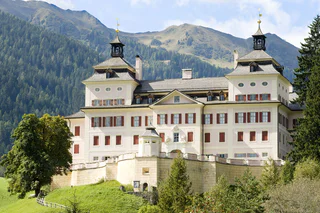
1/2
Roman Bridge Head and Masonry Embankment
Plars di Mezzo/Mitterplars, Algund/Lagundo, Meran/Merano and environs
Le long des pistes cyclables de la vallée du Sud-Tyrol se trouvent non seulement les sept villes du pays, ainsi que des villages viticoles historiques et des petits hameaux, mais aussi quelques-uns des plus beaux sites touristiques et des attractions de loisirs les plus populaires pour toute la famille. Du château de Churburg aux thermes de Meran/Merano, de la Hofburg de Brixen/Bressanone au musée de la ville de Sterzing/Vipiteno. Pour cette sélection, nous te recommandons de t'écarter de ton itinéraire et de faire un petit détour.

1/2
Plars di Mezzo/Mitterplars, Algund/Lagundo, Meran/Merano and environs

1/4
Bolzano Centro/Bozen Zentrum, Bolzano/Bozen, Bolzano/Bozen and environs

1/6
Stanghe/Stange, Ratschings/Racines, Sterzing/Vipiteno and environs

1/4
Lazfons/Latzfons, Klausen/Chiusa, Brixen/Bressanone and environs

Mazzon/Mazon, Neumarkt/Egna, Alto Adige Wine Road

Ponte Gardena/Waidbruck, Waidbruck/Ponte Gardena, Brixen/Bressanone and environs

1/3
Merano/Meran, Meran/Merano, Meran/Merano and environs

Bolzano Centro/Bozen Zentrum, Bolzano/Bozen, Bolzano/Bozen and environs

Gries/Gries, Bolzano/Bozen, Bolzano/Bozen and environs

1/8
Vipiteno/Sterzing, Sterzing/Vipiteno, Sterzing/Vipiteno and environs

1/10
Salorno/Salurn, Alto Adige Wine Road

1/5
Monguelfo/Welsberg, Welsberg-Taisten/Monguelfo-Tesido

1/5
Naturno/Naturns, Naturns/Naturno, Meran/Merano and environs

1/11
Villabassa/Niederdorf, Niederdorf/Villabassa, Dolomites Region 3 Zinnen

Chiusa/Klausen, Klausen/Chiusa, Brixen/Bressanone and environs

1/3
Sluderno/Schluderns, Schluderns/Sluderno, Vinschgau/Val Venosta

1/5
Cermes/Tscherms, Tscherms/Cermes, Meran/Merano and environs

Bolzano Centro/Bozen Zentrum, Bolzano/Bozen, Bolzano/Bozen and environs

1/11
Merano/Meran, Meran/Merano, Meran/Merano and environs

1/7
Vipiteno/Sterzing, Sterzing/Vipiteno, Sterzing/Vipiteno and environs

Colle Isarco/Gossensaß, Brenner/Brennero, Sterzing/Vipiteno and environs

1/2
Aica/Aicha, Franzensfeste/Fortezza, Brixen/Bressanone and environs

1/10
Gargazzone/Gargazon, Gargazon/Gargazzone, Meran/Merano and environs

1/4
Naturno/Naturns, Naturns/Naturno, Meran/Merano and environs

1/4
Trens/Trens, Freienfeld/Campo di Trens, Sterzing/Vipiteno and environs

1/3
Juvale/Juval, Kastelbell-Tschars/Castelbello-Ciardes, Vinschgau/Val Venosta

1/4
Caminata di Tures/Kematen, Sand in Taufers/Campo Tures, Ahrntal/Valle Aurina

1/2
Bressanone città/Brixen Stadt, Brixen/Bressanone, Brixen/Bressanone and environs

1/10
Caldaro Paese/Kaltern Dorf, Kaltern an der Weinstraße/Caldaro sulla Strada del Vino, Alto Adige Wine Road

1/9
Rablà/Rabland, Partschins/Parcines, Meran/Merano and environs